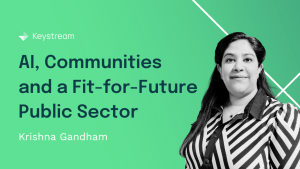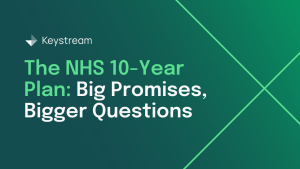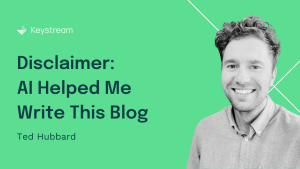03.07.2025
Disclaimer: AI Helped Me Write This Blog
Or did it. Now that anyone with a prompt window can generate professional-sounding text, AI is turning our writing into the same bland, beige template. And that’s becoming a real problem when you’re trying to get people to actually pay attention and take action.
Everything Sounds the Same Now
Every digital strategy, LinkedIn post or proposal could be copy-pasted between platforms and organisations. “Establish cross-functional governance.” “Ensure stakeholder buy-in.” “Multiple system touchpoints create workflow inefficiencies”.
This standard strategy language sounds professional, but it’s completely unmemorable. It gets filed under “we’ll get to that eventually” because nothing about it demands immediate attention.
But when someone says “your maternity ward is using technology older than some of your patients” or “your clinical staff log into 11 different systems per shift” – That’s the difference between formulaic AI text and something that actually makes people uncomfortable enough to act.
Look at these two:
“Patient flow optimisation requires enhanced digital touchpoints.”
Versus:
“Mrs. Jenkins waited four hours in A&E because three departments couldn’t see she’d already had her blood tests done.”
One sounds like it came from a generic smoothed template. The other creates a vivid, human example that lands harder and motivates people to actually solve the problem.
(Disclaimer #2 – I don’t know a Mrs. Jenkins or how long she may or may not have waited in A&E)
When to be smooth
Sometimes you need smooth writing – board papers that can’t afford to offend, procurement documents that must tick compliance boxes. There’s absolutely a place for polished language in professional contexts.
But if you want actual change, or to get people’s attention – transformation needs friction. You need the kind of edges that make people stop and think “wait, are we really asking our staff to do that?”
Because when every digital strategy sounds the same, when every recommendation follows the same AI-polished template, we’re not just failing to communicate effectively. We’re failing to create the urgency that drives real change.
What We’re Really Choosing
So what separates writing that drives change from writing that gets ignored?
The memorable copy I’ve seen start with someone saying something unpolished. Like “our nurses spend more time logging into systems than they do looking after patients.”
It works because vivid, human examples cut through the noise. They’re specific enough to make people picture their own clunky experiences and frustrations with technology, and that personal connection motivates action in ways that generic language never can.
Every time we let AI smooth out our writing, we’re making a conscious choice to trade impact for safety. We’re choosing the comfortable middle ground over the specific insights that might actually change something.
This choice, to prioritise sounding professional over being memorable, is exactly why so many strategies gather dust instead of driving transformation. The organisations getting transformation right aren’t the ones with the prettiest strategies. They’re the ones willing to name their problems honestly and work with people who understand that sometimes the most effective communication doesn’t sound like everyone else’s.



